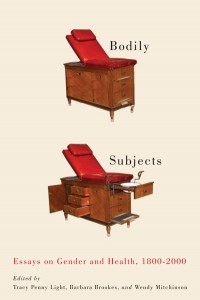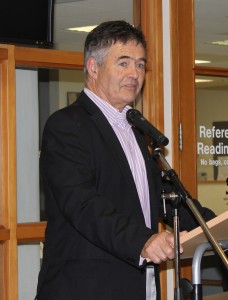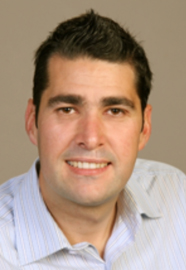Visiting Fellow
The Centre for Research on Colonial Culture is very pleased to be hosting Dr. Patricia O’Brien, an ARC Future Fellow based at the Australian National University. In 2012 she was the JD Stout Fellow in New Zealand Studies at Victoria University of Wellington, and in 2011 she was the Jay I. Kislak Fellow in American Studies at the John W. Kluge Centre at the Library of Congress, Washington, DC. From 2001-2013 she was visiting Associate Professor in the Centre for Australian, New Zealand and Pacific Studies at Georgetown University, Washington, DC. She is the author of The Pacific Muse: Exotic Femininity and the Colonial Pacific (Seattle, 2006) and is currently working on a biography of Samoan nationalist leader Ta’isi O. F. Nelson.
Dr. O’Brien is visiting the Centre until March 24th and while in Dunedin will be giving two research talks. Her first talk is on Wednesday March 18th in the Department of History and Art History (Burns 5, from 3.30) on ‘Ta’isi O. F. Nelson and the Mau: Australian Dimensions to New Zealand and Samoan History’. On March 23rd she will present a paper to Te Tumu: School of Maori, Pacific and Indigenous Studies called ‘The Trials of Mr Nelson: Ta’isi O. F. Nelson and Indigenous Resistance in Interwar Samoa’. This talk will take in Cen3 (Central Library) from 2.30.
We hope to see you at both talks!
New Publications
Congratulations to Tony Ballantyne and Barbara Brookes on the release of their newest books. Tony’s book, Entanglements of Empire, was released by Duke University Press in late December, with a New Zealand imprint published by Auckland University Press being released in April.
In the past week, a collection of essays co-edited by Barbara Brookes with Canadian colleagues Tracy Penny Light and Wendy Mitchinson (both University of Waterloo), Bodily Subjects: Essays on Gender and Health, 1800-2000, was released by McGill-Queen’s University Press. The collection explores the historical entanglement between gender and health across two centuries and in a variety of locations through essays ranging from the nineteenth-century British Poor Laws, an Aboriginal reserve in 20th century Queensland, AIDS activists on the streets of Toronto in the 1990s.
Congratulations Barbara and Tony!
Dunedin: New Zealand’s history capital?
Jock Phillips, an eminent historian in both academic and public domains has just annointed Dunedin as the powerhouse of NZ historical research and scholarship. And this just days after Unesco named Dunedin a Creative City of Literature. Jock, until recently the Ministry of Culture and Heritage’s General Editor of Te Ara: the Encyclopedia of New Zealand has suggested in his latest blogpost that “New Zealand history moves south”, citing examples of the academic strength of historians at the University of Otago, its public institutions, such as Toitū: Otago Settlers Museum, as well as citizen-driven initiatives. Whatever aspect of history turns you on, Jock suggests that “Dunedin in 2015 is the place to be”. Click here to read Jock’s blogpost.
Colonial Worlds Elemental Histories Symposium
A one-day elemental histories symposium, a Centre for Research on Colonial Culture event, was held on 31st October, at the Hocken Collections. ‘Colonial Worlds Elemental Histories’ began with a keynote address from Grace Karskens, Associate Professor, UNSW. Her stories of early settlers (1802-1830s) who farmed the fertile but flood-prone Castlereagh region west of Sydney, revealed dogged determination in the face of repeated devastation. The settlers developed a culture of risk-taking and opportunity that underlay their fatalistic attitude towards the Australian bush.
Professor Tom Brooking’s paper ‘Yeotopia Gained: New Zealand 1840-1914’ explained how by 1914 most farming in New Zealand was carried out by family concerns but on someone else’s land. The changes in land ownership revealed a fracturing of a flawed dream.
‘Elementally United: The Case of Canterbury’s Nor’west Wind’ by Katie Pickles exhorted us to think with our senses. The wind, a dominant force in shaping emotion is both felt and seen in the landscape.
Dr Michael Davis’s paper entitled ‘Entangled Knowledges: Indigenous and Environmental Histories across the Tasman’, featured the botanical explorations and friendships between New Zealander William Colenso, Australian Allan Cunningham and Englishman Joseph Dalton Hooker.
In ‘Getting to Know You: People and Rabbits in Southern New Zealand’, Emeritus Professor Peter Holland presented a collation of information culled from diaries and ledgerbooks of rural farms and stations. Across southern New Zealand rabbit densities varied with swings in weather and climate, and interactions between people and rabbits changed.
By contrast Dr Vaughan Wood examined a single but detailed diary for his paper ‘Mapping the network of a nineteenth century Canterbury farm.’ He was able to plot, trips to the store, post office, friends and relations. Asymmetric patterns of movement across farms were governed by swampy land. These farming men, he concluded were an integral part of community.
After lunch Dr Michael Roche gave us an exposition on ‘The Forest as an Elemental Natural Resource in Colonial New Zealand and the First Failure of Scientific State Forestry, 1874 to 1877.’ These three years saw the introduction of scientific forestry brought by Captain Campbell Walker, who had a career with the Indian Forest Service in Madras and had studied orthodox German practice.
Continuing with the forestry theme Dr André Brett provided us with ‘Forests and Provincial Abolition: Did Conservation Kill the Provinces?’ Forest conservation enjoyed prominent supporters in the political and scientific communities during the provincial era, but it failed to capture the public imagination.
Dr James Beattie’s paper ‘Expanding the Horizons of Chinese Environmental History: Cantonese gold-miners in colonial New Zealand, 1860s-1920s’, used the experiences Chinese working alluvial gold in Otago to explain how their traditional knowledge of water management techniques coupled with hard work and tenacity changed the landscape. One entrepreneurial family Choie Sew Hoy was particularly important in the dredging boom of the 1890s.
PhD Candidate Lucy Mackintosh shared her research on Auckland’s several park-scapes. Her paper ‘Shifting Grounds: Narratives of Identity in Auckland Landscapes’ examined the urban environment with its monuments. ‘Our parks’ she claims ‘so often valued for their natural features, are also rich repositories of stories about the past.’
Continuing the theme of public spaces, Dr Joanna Cobley’s paper ‘The Nineteenth Century Landscape: economics, heritage and national identity’ looked at the heritage site of Tongariro National Park. Gifted to the nation in 1887 this first National Park is still viewed within the frameworks of useful and beautiful.
In the final paper of the day Eric Pawson ‘Writing environmental history’ asked the delegates for their input on an article he was finishing for the International Encyclopedia of Geography.
At a small function also held at the Hocken the book James Beattie and Matthew Henry launched their book Climate, Science, and Colonization: Histories from Australia and New Zealand, by James Beattie, Matthew Henry and Emily O’Gorman (eds). Palgrave MacMillan, London, 2014. Emily O’Gorman was unable to attend the function.
Thanks to Rosi Crane for supplying this report.
Speech to text: Missionary endeavours “to fix the Language of the New Zealanders”
A paper given by L.Paterson at the “Dialogues: Exploring the Drama of Early Missionary Encounters” symposium, Hocken Collections, Dunedin, 7-8 November, 2014.
In this paper I am looking mainly at Thomas Kendall, a member of the first batch of missionaries to New Zealand, and his efforts to create an orthography for te reo Māori. This is of course a topic that other scholars have covered in the past, not least Judith Binney and Jane McRae, but the theme of this symposium is “Dialogues: exploring the drama of early missionary encounters”, held as part of the launching of the new online archive of the Hocken Library’s Marsden Collection, so my paper makes an effort to utilize some of the discussions on orthography from that archive.
I perhaps need to state that I am a historian with some Māori-language skills rather than someone with expertise in linguistics, and I am straying a little outside of my normal period, the 1850s to the early twentieth century, to look at this early missionary period. It is also good that Kuni Jenkins and Alison Jones’s paper at this symposium on the early Missionary-Māori encounter, and their reflection on their 2012 book, He Kōrero: First Maori- Pakeha Conversations on Paper, gives a good insight on how Māori contributed to the development of the orthography. The archive, compiled from missionary letters and journals, is less revealing on their input. The “dialogues” that follow are largely between Thomas Kendall, an on-the-ground missionary, Samuel Marsden, his immediate superior in Sydney, and the Church Missionary Society officials in London. What these texts do showcase is the ease with which historical material can be gleaned from the wealth of material contained in the Marsden Online Archive.
One thing that was important to the early missionaries was to make the scriptures available to Māori in their own language. If Māori were able to read the Bible in their own language, then it would be easier to convert them to Christianity. For this to happen missionaries would have to learn not only how to speak the language, but also to develop a system for writing it down. This would then make it possible to teach Māori how to read, as well as to translate and print the scriptures.
Although not yet ordained, Kendall was the best educated of the missionaries, and as can be seen on a letter written to one of the CMS Secretaries when on his exploratory trip to the Bay of Islands in early 1814, he was well aware that the task would not be easy.
As far as I am concerned, I should know but little of myself, did I not feel conscious of my own inability. Even an attempt to fix the Language of the New Zealanders so that they may be instructed in their own Tongue is a great work; and cannot in the very nature of things be accomplished for some years to come…
[Thomas Kendall to Josiah Pratt, 25 March 1814. MS_0054_035and036.]
We can see here some of Kendall’s early efforts at collecting vocabulary from that first trip.
Ire mi kiki (Come & eat)
Haere mai kaikai [Haere mai [ki te] kai.]
Emmera Ho my why (Bring me some water)
E mara homai [he] wai.
Yahheeyahee pi (A fine night)
Ahiahi pai
[Thomas Kendall to Josiah Pratt, 15 June 1814. MS_0054_043.]
When you compare his renditions with how they might be spelled now (in italics) – we can see that he has utilized English vowel sounds in his spelling. However, he has not been consistent, for example writing the AI sound, as in kai, wai and pai, with either an I or a Y.
The whole process was going to be slow, but the CMS was hopeful. We can see here a letter from one of their secretaries less than a year after the mission was first planted expecting Kendall to be making a start at translating some scripture.
We shall hope to hear that you have made proficiency in the New Zealand tongue; and that the way will be thus prepared by you for the Translation of the Scriptures, when you are joined by a Clergyman who understands the originals. In the mean while we hope that you will prepare portions of Scripture, as well as you may be able; and that the little New Zealanders will, under your kind and paternal care, first learn the rudiments of their own tongue out of the Book of God.
[Rev Josiah Pratt to Thomas Kendall, 16 August 1815. MS_0055_019]
However, it was clear that they thought authorative translations were probably beyond Kendall’s skills, and a “real” clergyman who understood the Greek and Hebrew versions would be needed. By October, 1815 Kendall wrote back to Pratt ”I can speak to them in their own tongue, as yet, but very imperfectly” and he asked if a clergyman could come to help with “fixing the Native Language”. [Thomas Kendall to Samuel Marsden, 27 May 1815. MS_0055_012.]
No clergyman was as yet forthcoming, and in 1815 he produced A Korao no New Zealand, the first book produced for a Māori audience. His grammar is slightly better than his original collections, but we can see in an extract that his spelling continues on the same basis – using English vowels. The italicised text is as it would be spelled today.
Kámatte aou te eaki (I am very hungry)
Ka mate au [i] te hiakai.
Iremi taooa kekone kiei (Come let us sit down and eat.)
Haere mai tāua ki konei kai ai.
[T. Kendall, A Korao no New Zealand (1815)]
Kendall was not a trained linguist, and he wrote the sounds as he heard and understood them. Notwithstanding that Māori may have simplified their expressions to make comprehension easier for Kendall, as can be seen in an example he collected in early 1814.
Shoroe ahaw Dingha Dingha Matta
(Wash your hands and face)
Horoia ōu ringaringa [me tōu] mata.
[Thomas Kendall to Josiah Pratt, 15 June 1814. MS_0054_043.]
But why does it seem so different to modern Māori? We should compare his efforts with modern-day language learners. If you asked an average Japanese people today to say “red” he may well say “led” or “red”. That is because the Japanese language does not distinguish between these sounds, and either L or R can be used in Japanese without changing the meaning at all. Indeed, many Japanese people cannot really hear the difference. Similarly many English speakers have difficulty with other languages, such as Russian or Arabic, that distinguish between sounds that English does not.
Ngāpuhi simply did not differentiate between SH and H, or between D and R. Here in Southern New Zealand, Kai Tahu did not differentiate between L and R, which is why we have Lake Waihola just down the road. But H and SH sounds did sound different to Kendall, so he wrote them down as he heard them.
It is well known that Professor Samuel Lee, the famed linguist at Cambridge University, collaborated with Kendall, Hongi Hika and Waikato in 1820 to create an orthography for te reo Māori. But Lee’s involvement had began several years earlier. In 1818 Lee was already working on Māori grammar, with the aid of Kendall’s A Korao no New Zealand, as well as the services of two Māori travellers, Tuai and Tītere. [Edward Bickersteth and Josiah Pratt to Thomas Kendall, 12 March 1818, MS_0056_076]
It is clear too that Kendall was now leaning towards what were called the “continental” vowel sounds, such as used in Italian. In 1819 he wrote “The Taheitians … pronounce the sounds of the letters and vowels after a similar method very readily.” [Thomas Kendall to Samuel Marsden, 21 April 1819. MS_0056_150.]
Although the missionaries in Tahiti had serious disagreements about an orthography for the Tahitian language, one of their number, John Davies, had developed a system based on “continental vowels”, which Kendall was referring to (Davies, p.77). Kendall wrote later,
On the Sunday after easter I had an opportunity to examine some Taheitian sailors belonging to the Ship King George, and they read the Works of their Missionaries both in print & Manuscript very readily, whereas I am told, the Society Islanders [Tahitians] could never be taught by our [English-based] method.
[Thomas Kendall to Josiah Pratt, 20 May 1819. MS_0056_162.]
In another letter to Pratt he wrote,
Tell Mr Lee that in writing the New Zealand Language I have first fixed the Sounds of the vowels and then formed those sounds, without paying regard to the English or any other orthography.
[Thomas Kendall to Josiah Pratt, 17 May 1819. MS_0056_159.]
Several of Kendall’s manuscripts were subsequently sent to Lee and the CMS. The Secretaries wrote to Kendall,
The New Zealanders first Book [A Korao no New Zealand] has greatly pleased us. Our Orientalist, Mr Lee, is making use of Tooi & Teeterree (who have recently arrived) to form a complete Grammar & Vocabulary of the New Zealand Language.
[Edward Bickersteth and Josiah Pratt to Thomas Kendall, 12 March 1818. MS_0056_076.]
However Bickersteth and Pratt were a little more critical of Kendall’s efforts, when they wrote to Marsden.
Mr Kendall appears to have adopted too many marks of aspiration &c. His system would puzzle the New Zealanders. The whole will require deliberate investigation; and time spent herein in the outset will probably save a great deal in the end.
[Edward Bickersteth and Josiah Pratt to Samuel Marsden, 3 August 1819. MS_0056_188.]
So Hongi, Waikato and Kendall travelled to England in 1820, and while there they worked with Lee to work on an orthography, vocabulary and Grammar, published as A Grammar and Vocabulary of the Language of New Zealand in 1820.
Extract
T. Na tána wahíne ra óki i ó mai. Ke táwahi ra óki e O’ngi, ke Ingland. Ki á no koe i róngo nóa?
P. Ki a no ‘au i róngo nóa.
T. Kóa díro ke ráia; kóa tai ke, méa ka e óki mai.
P. A’i! k’wai tóna kaipúke i éke ai ía?
Modern orthography
T. Na tāna wahine rā hoki i homai. Kei tāwāhi rā hoki a Hongi, kei Ingarangi. Kianō koe i rongo noa?
P. Kianō au i rongo noa.
T. Kua riro kē rā ia; kua tae kē, meake e hoki mai.
P. Āe! Ko wai tōna kaipuke i eke ai ia?
Thomas Kendall. A Grammar and vocabulary of the language of New Zealand (1820).
We can see that there is a clear improvement on Kendall’s earlier work. However, the text still sports dropped Hs, and the use of both R and D. Although there are a few things that don’t look right, most of the vowels are pretty close to modern Māori.
Kendall clearly wanted to take the credit for what was clearly a collaboration between Lee, Hongi, Waikato and himself. He wrote to Pratt:
I thank you for indulging me with the privilege of the instruction of the Rev.d Professor Lee so long. I have now nearly completed my work. The Professor has assisted me very much I could not have done without him.
[Thomas Kendall to Josiah Pratt, 4 October 1820. MS_0498_094.]
So how did their efforts go down with the other missionaries? Kendall’s contemporaries did not like it at all, and their main concern appears to be with the use of the continental vowels. Marsden visited New Zealand in 1823. Kendall had been sacked at this point due to his adultery, and was waiting to leave New Zealand, but he had been told to draw up a vocabulary, using the English vowel sounds.
When I called upon you after our Shipwreck I advised you to employ your time untill [sic] an opportunity for our return to Port Jackson, in drawing up a vocabulary of the New Zealand language in as correct and simple a manner as you could retaining the pronunciation of the English Vowels, as I found the Missionaries met with insuperable difficulties in speaking the language according to the Rules laid down in your Grammer. [sic]
[Samuel Marsden to Thomas Kendall, 14 August 1823. MS_0057_098.]
The debate over English versus continental vowels also occurred in Tahiti, where John Davies was initially outvoted in his attempt to do away with the English vowels (Davies, p.78). As in New Zealand, his contemporaries thought learning a new system would be too hard.
Marsden writing in his journal declared the Grammar to be imperfect, and confusing.
The rules laid down in the Grammer [sic] for the Orthography and Pronounciation of the language is not simple enough for the Missionaries to comprehend— They cannot retain in their memory the sound of the vowels as laid down in the rules of the Grammer— and pronounce them as the Natives can understand them.
[Samuel Marsden’s Journal from 2 July 1823 to 1 November 1823. MS_0177_003.]
I do not see any good reason for changing the sound of the vowels as the New Zealanders can with so much ease sound all the English Alphabet— If in speaking and writing the N[ew] Zealand language the Europeans retain the English pronounciation, the whole difficulty of which they complain, will be removed.
[Samuel Marsden’s Journal from 2 July 1823 to 1 November 1823. MS_0177_003.]
Marsden met with Kendall, who admitted that even he could not follow all the rules. Marsden wrote,
It appeared to me absurd to study Mr Kendalls theory, which he himself could not reduce to practice.
[Marsden’s Personal Copy of the Journal of his Fourth Visit to New Zealand. MS_0177_004.]
Marsden also thought it better if Māori first learnt the English sounds, and then learnt the English language, especially as he thought the Māori language “unchaste”.
I also recommended that all the English terms for such things as the native had never seen, should be introduced into the N Zealand language, that a Sheep should be called a Sheep, a Cow a Cow &c.
[Samuel Marsden’s Journal from 2 July 1823 to 1 November 1823. MS_0177_003.]
Rev Nathaniel Turner, one of the Wesleyan missionaries in the Bay of Islands, also called on Marsden to complain about the 1820 Grammar. Marsden reassured him that it would be going back to the way it was. Turner “expressed much satisfaction” at retaining the English vowels. Marsden opined:
I hope this question will now be at rest, as all are unanimously of opinion that the Vowels should retain the English pronounciation [sic]
[Marsden’s Personal Copy of the Journal of his Fourth Visit to New Zealand. MS_0177_004.]
Marsden’s 1823 visit coincided with changes in the Mission. He brought Rev. Henry Williams to New Zealand and Williams soon after became the effective leader of the Mission. Less than six months after arriving, the new missionary had decided that Kendall’s grammar was a dud.
We, in Council, have condemned the book called “The Grammar.” I cannot tell what share Professor Lee may have had in the composition thereof, but it certainly appears far from simplicity.
[Henry Williams to the Rev E. G. Marsh, January 27, 1824, in Carleton, p.37.]
The Grammar did however made its way to Hawai’i, where the missionaries there may have used it, as they too grappled with creating an orthography for the Hawaiian language (Schütz, p.251).
Kendall was still living in the Bay of Islands at this stage, but away from the mission, and therefore sidelined from new developments in the orthography. Williams put more emphasis on learning the language, as his biographer suggested “not in the slovenly style in which it may be learned by conversation, but in a scholar-like fashion, ascertaining the rules by which it is governed, compiling a dictionary, and fitting themselves to undertake a translation of the Holy Scriptures” (Carleton, p.32). In this efforts he was helped by his brother William Williams who arrived in 1826, and Robert Maunsell in 1836.
Over the next few years there was a slow adaptation of Māori-language orthography. Take, for example this example from 1826: a Proclamation by the NSW governor.
Ná tóna Excelenei, iá Sir Thomasa Brisabane, ko te Captani, ko te tíno Rángatira wáka shau; o ténei káinga, o New South Wales, me óna tíne motu atu óki, &c. &c. &c.
II. Na te méa, e máha ngá páshua tanga o ngá Mótu, kí te Moana Pocifica; a, kí te Moana tudiana, e nga tángata kíno: á ko ugá [sic] tàngata shóko ká máte iá rátou;
[Books in Māori, 6]
The translation was probably done by the John Butler, who had been a missionary at Kerikeri, but by 1826 was living in NSW. We can see the use of some English words and names, and some of the consonants of the older orthographies, such as the W for WH, SH for H, and D for R.
This was also the case in the example below, an extract from the Wesleyan Methodist Mission version’s of the Lord’s Prayer also printed in 1826.
To matu Matua e noho’na koe i dunga ki te rangi, kia tabu tou ingwa. [Books in Māori, 7]
But it appears that any move to return to English vowels was now over. As we see from these scriptural selections below from 1829 and 1833, within a few years written Māori had almost achieved its modern form.
Ko te tahi o nga upoko.
1 I te orokomeatanga i hanga e te Atua te rangi me te ’wenua.
[Books in Māori, 9]
Ko te tahi wahi o te Kawenata Hou o Ihu Karaiti te Ariki, to tatou Kai Wakaora. Me nga upoko e waru o te pukapuka o Kenehi. Ka oti nei te wakamaori ki te reo o Nu Tirani.
[Books in Māori, 15]
What is notable is that the Williams brothers did not opt for English vowels, but continued with the continental vowels that the 1820 grammar had introduced. The new missionaries, such as the Williams brothers, were far better linguists than Kendall, and developed the orthography to its more usable form. They were aware that the Māori language did not distinguish between D and R, so opted just for the R. Similarly other unnecessary letters such as B, L, and SH were dropped. The one major exception that remained was the use of W or ‘W for the WH sound, as seen above. As Binney points out Kendall did attempt, unsuccessfully, to republish a revised grammar in the late 1820s, in which the WH sound would have been differentiated (Judith Binney. ‘Kendall, Thomas’, DNZB). But it was not until the 1840s that the WH was incorporated into the orthography. It is quite possible that regularizing the spelling, and the spread of literacy, has, over time, also had an effect on how te reo was pronounced, with sounds such as D and L falling out of favour.
In conclusion, Thomas Kendall was right in 1814 when he said that fixing the language would be a great work, and a task that would take some years to achieve. He struggled initially with his English ear, but together with Hongi, Waikato, and Samuel Lee, created an orthography in 1820 that went some of the way to finding a workable system. Their efforts were not appreciated by the other missionaries, who wanted to keep to the old style of writing Māori down. It was really the next wave of missionaries, better educated and more methodical in approach, who improved on Kendall’s work, translated considerable amounts of the scriptures, and who had the most success with their evangelical endeavours.
Carleton, H. The Life of Henry Williams, Auckland, 1874.
John Davies, A History of the Tahitian Mission 1799-1830, edited by C.W. Newbury (ed), Cambridge: Hakluyt Society, 1961.
Jones A. and K. Jenkins, He Kōrero: First Maori- Pakeha Conversations on Paper, Wellington: Huia, 2012.
Kendall, T. A Korao no New Zealand, Sydney, 1815.
Kendall T. and S. Lee, A Grammar and Vocabulary of the Language of New Zealand, London, 1820.
Parkinson P. and P. Griffith, Books in Māori 1815-1900: Ngā Tānga Reo Māori, Auckland: Reed, 2004.
Schütz, A. J. Voices of Eden: A History of Hawaiian Studies, Honolulu: University of Hawaii Press,1994.
Quick News: Overseas Invitations
Two of CROCC’s members are currently in Australia, having been invited to give presentations at universities there. CROCC Director is at the University of Brisbane, and gave a talk last night on “Colonial Knowledge Making” to the Centre for the History of European Discourses.
Angela Wanhalla will be presenting today on the Mothers Darlings Project, at the University of Melbourne, as part of the “Writing the Pacific: Re-writing Australia” symposium.
Working Lives Book Launch
A good crowd came to the Hocken Library for the launch of Erik Olssen’s new book, Working Lives c.1900: A Photographic Essay. Erik, an Emeritus Professor of the Department of History and Art History, is a particularly engaged member of the Centre. This book came out of his research for An Accidental Utopia?: Social Mobility & the Foundations of an Egalitarian Society, 1880–1940, a book he published with Clyde Griffen and Frank Jones in 2009, also with Otago University Press.
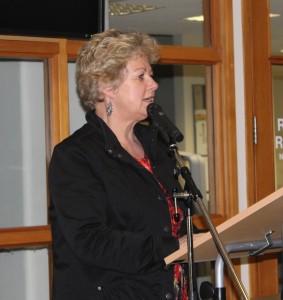
Rachel Scott, the Otago University Press Publisher addressed the crowd to begin the formal part of the evening
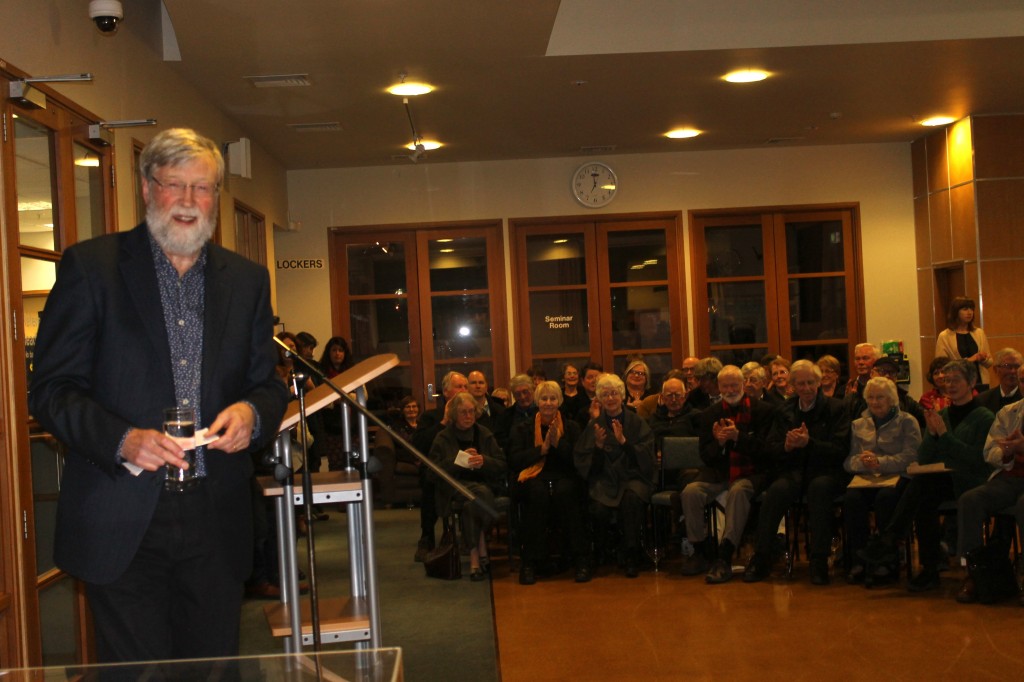
Erik gave an entertaining speech to those who came to the Hocken Library to help him launch his new book.
Erik encountered a lot of photographs that he was unable to include in An Accidental Utopia, and it was on the advice of the previous Otago University Press publisher, Wendy Harrex, that he went on to produce this wonderful volume.
“A World History of Bluff”
Last year CROCC member, Dr Michael Stevens won a Fast Start Marsden Award to research how the Southland port of Bluff connected with the rest of the world, and how this impacted on the town (and vice-versa), in particular the local Kāi Tahu people. As the Royal Society stated, “As a “Bluffie” of Kai Tahu descent, Dr Stevens is ideally placed to carry out a research project that is meaningful to both academics and the local inhabitants.” In order to share his on-going research, Michael has created a new website “A World History of Bluff” with an associated Facebook Page.
New Biography on Richard Seddon
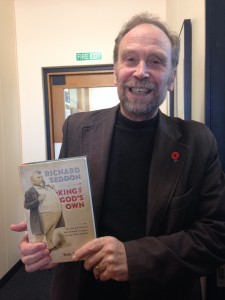 Richard Seddon was a colossal figure in New Zealand politics up to his death in 1906. His Liberal Party was New Zealand’s first modern political party; his government introduced old age pensions and votes for women, as well as an industrial conciliation and arbitration system. Seddon was able, for much of his time as Prime Minister, to gain the support from a wide range of the political spectrum, at the same time that the rest of the world marvelled at the country’s “socialist” experiments.
Richard Seddon was a colossal figure in New Zealand politics up to his death in 1906. His Liberal Party was New Zealand’s first modern political party; his government introduced old age pensions and votes for women, as well as an industrial conciliation and arbitration system. Seddon was able, for much of his time as Prime Minister, to gain the support from a wide range of the political spectrum, at the same time that the rest of the world marvelled at the country’s “socialist” experiments.
It has been almost 60 years since an authoritative biography of Seddon has appeared, R.M. Burdon’s King Dick. Until now! CROCC member, Professor Tom Brooking’s latest book Richard Seddon: King of God’s Own has just been published by Penguin Books, and gives us fresh insights into “the Life and Times of New Zealand’s Longest-serving Prime Minister”. Congratulations, Tom.
“Objects book” progress
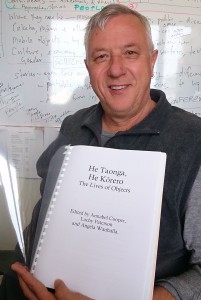
Manuscript ready for sending to Conal.
In February 2013 CROCC held its inaugural conference on “colonial objects”. This was a successful event attracting academics, librarians, archivists, heritage professionals, and others. It was always our intention to publish a collection of essays coming out of the conference presentations. The editors, Annabel Cooper, Lachy Paterson and Angela Wanhalla still have some loose ends to tie up (ably assisted by their RA, Katie Cooper) but are happy to report that our draft is almost ready. It has now been sent to Conal McCarthy at VUW to read and add a final reflective essay. Then it will be off to Otago University Press to perform their magic. Expect it in the bookshops in 2015. A big thank you to all involved.


